A Greenland Wasteland
Words by Dalene Heck / Photography by Pete Heck
As we paddled to shore on day six, new shades broke onto the palatte of blues, greens and greys we had become accustomed to seeing. On an open field just overhead from the beach, dull auburn and copper streaked across the land.
It wasn’t random patches of a rare arctic plant but a mammoth and disastrous mess of rotting metal – the sort of mess that can only be made by the careless hand of man.
We were seeing the remains of the Ikateq Airbase, code name “Bluie East Two”, built by the US in 1942. Erected as a weather station and base for flying anti-submarine patrols over the north Atlantic, its usefulness waned after WWII, and was abandoned in 1947.
They left everything behind. Dozens of vehicles, a crumpled air hanger, and over 20,000 oil barrels. As we traipsed through the wreckage I kicked at broken plates, circuit boards, countless chunks of treated wood being absorbed into the earth below with foliage creeping over.
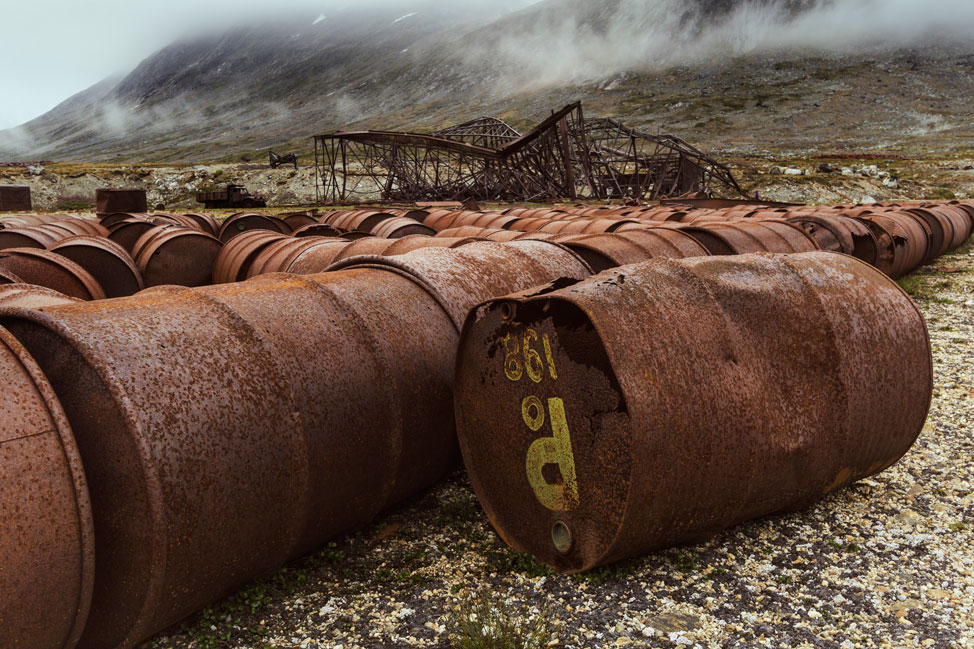
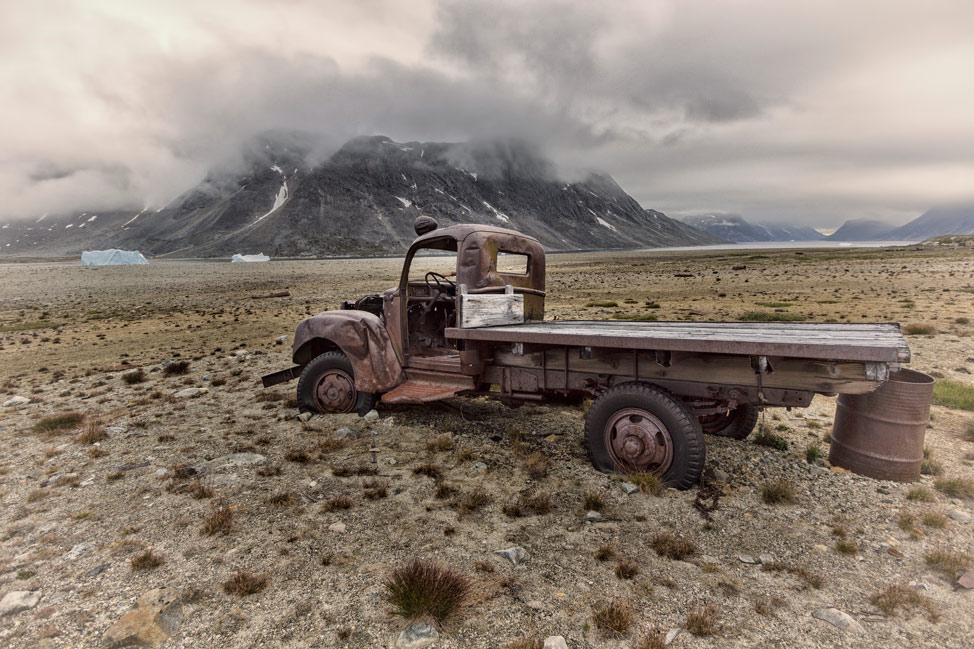
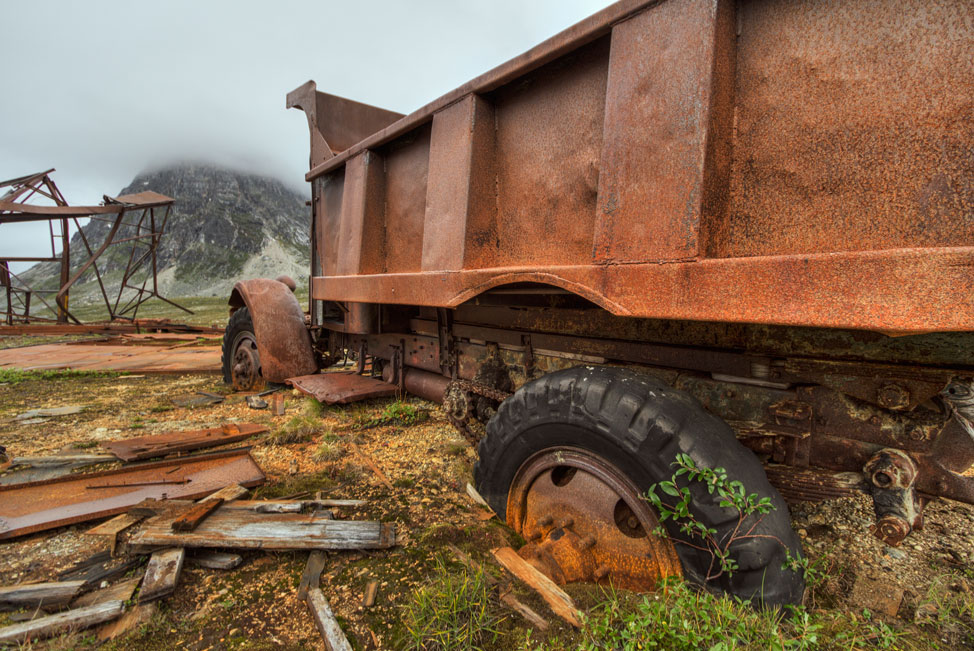
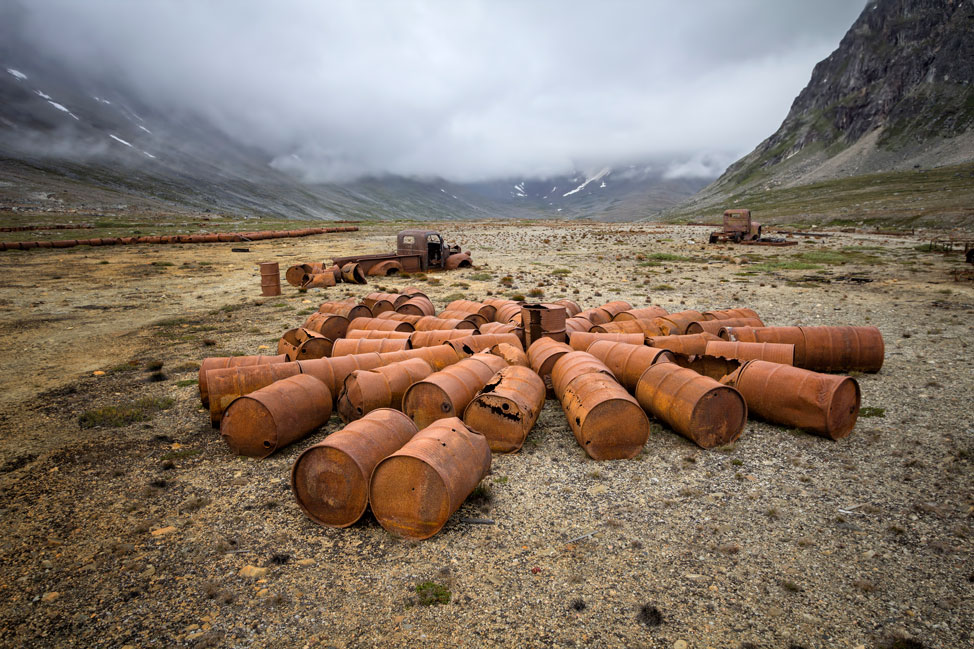
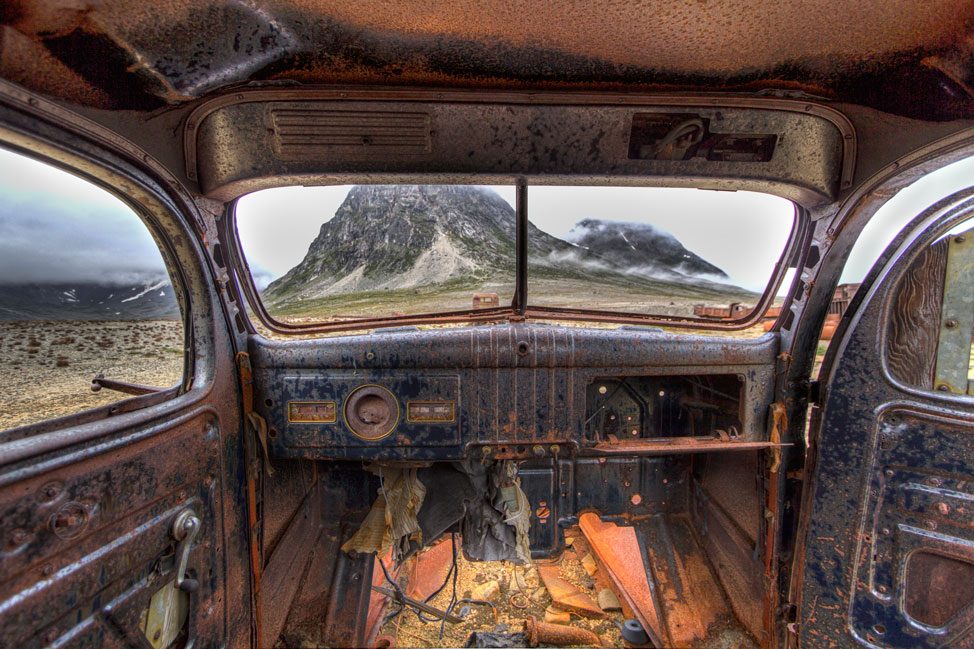
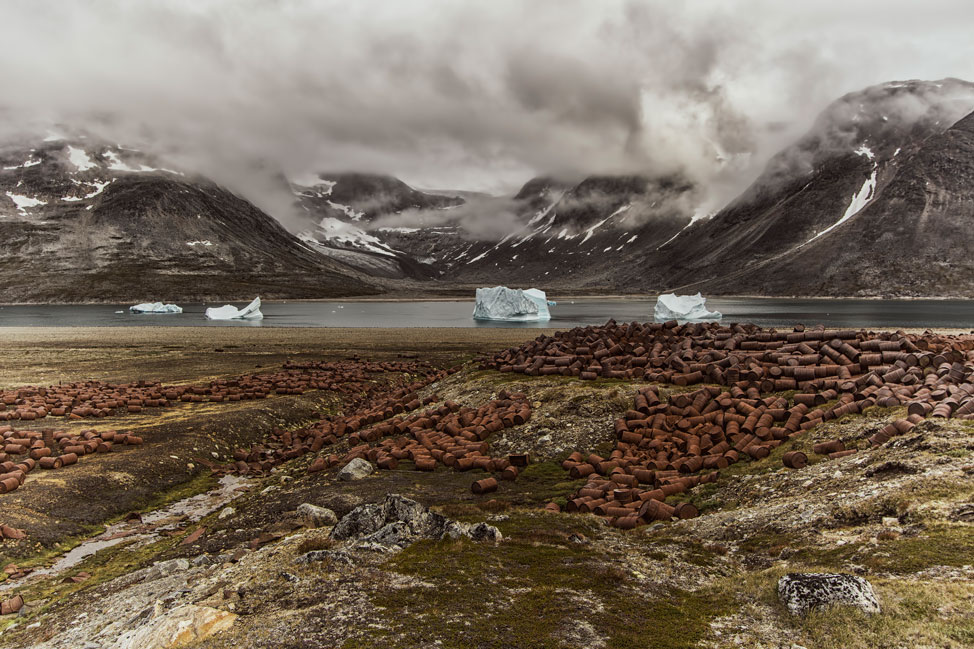
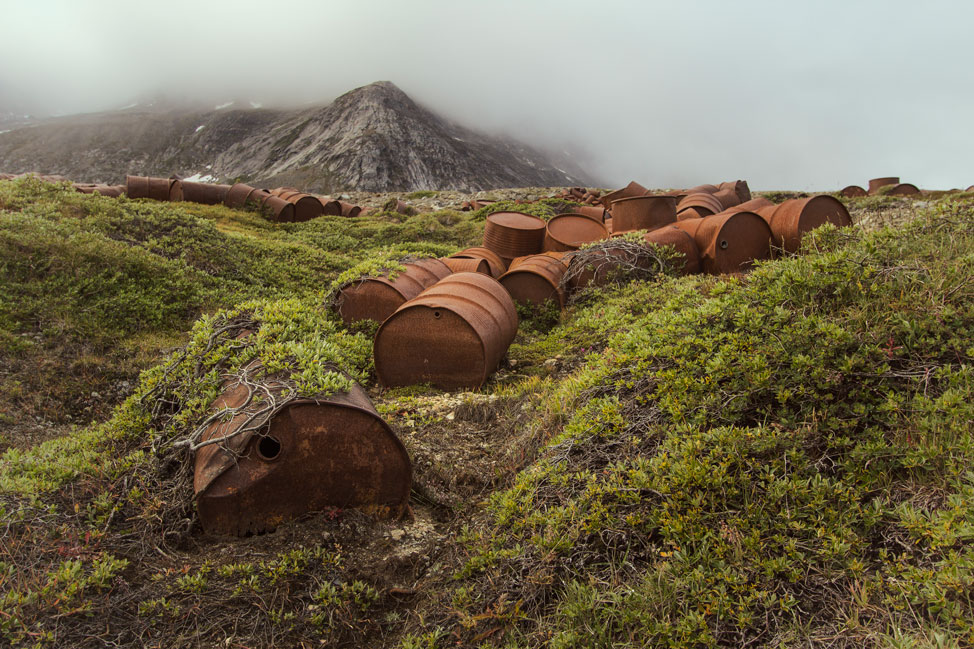

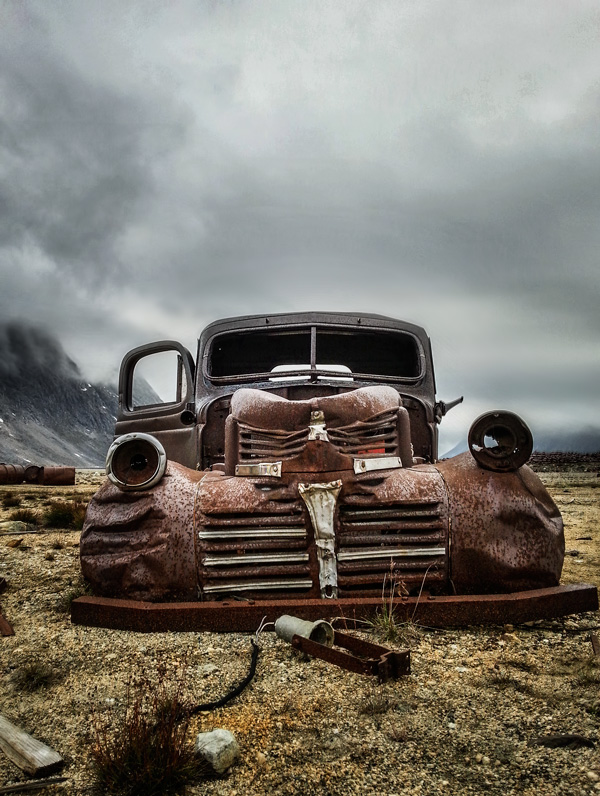
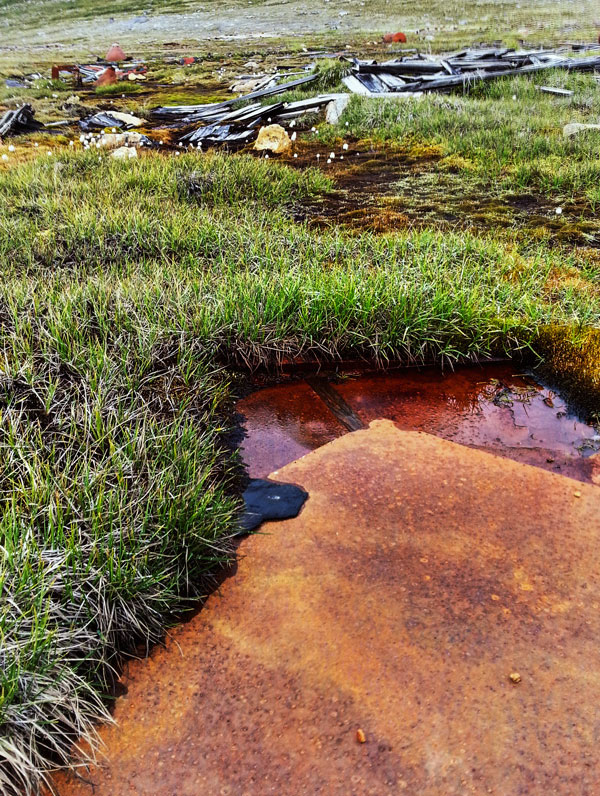
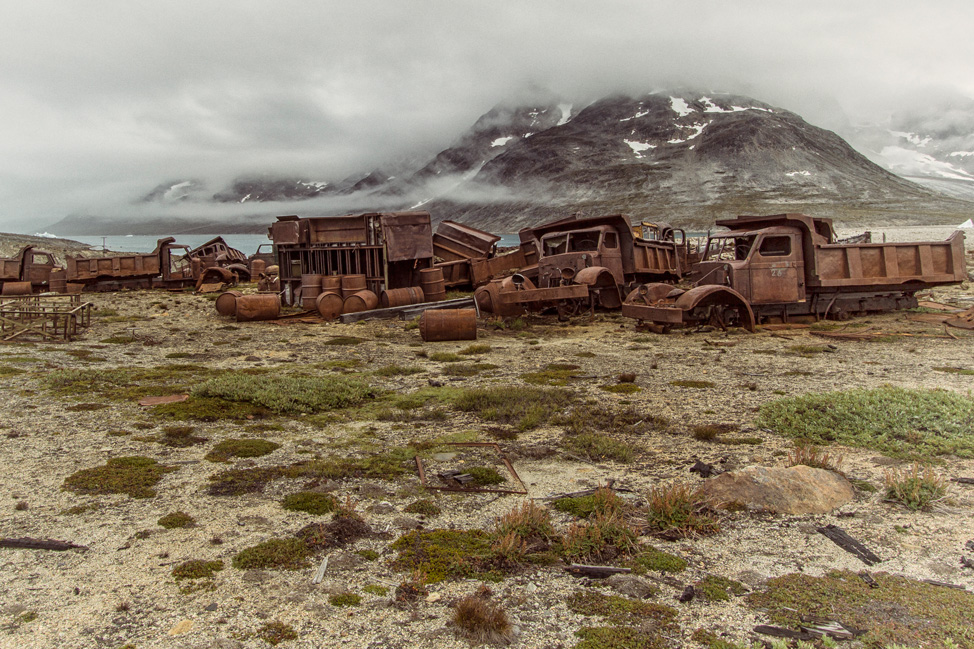
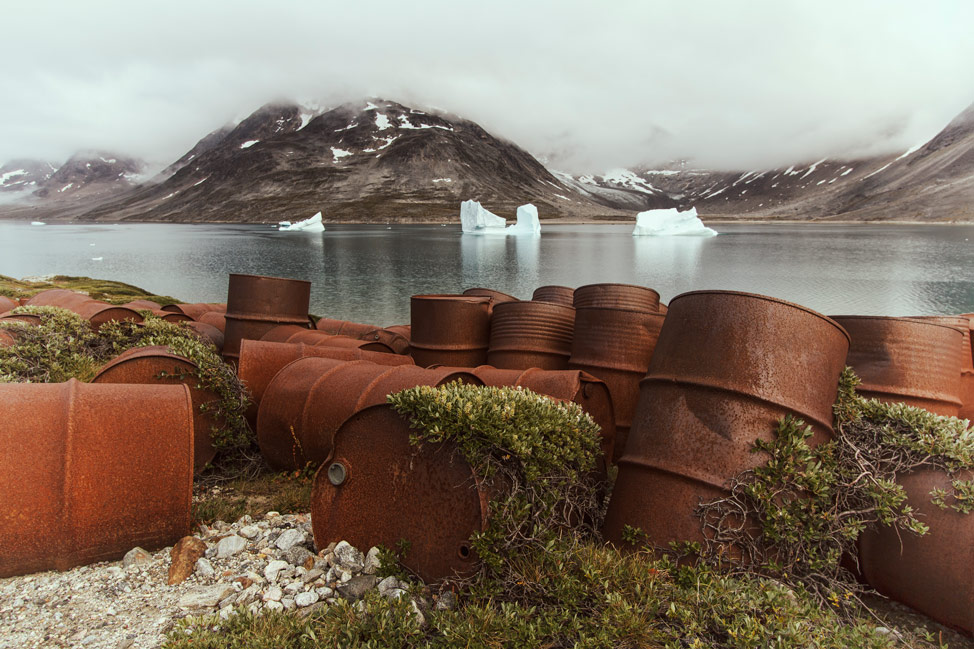
The sad reality is that this isn’t the only site. A nuclear powered cold war site, abandoned in 1966, now sits crushed under arctic snow just 800 kms shy of the north pole. And although the Thule Air Base is still being used by US and Danish forces, elevated radiation levels in a nearby fjord (thanks to a 1968 crash of a B-52 that was carrying four hydrogen bombs) remain ignored. And there are more.
How can such messes still exist? Unless specifically outlined in the same agreements which saw to their construction in the first place, the US position has been that it “reflect[s] a shared burden with our host nation for our contribution for defense of the free world.” And, according to a former Denmark minister of environment, “They [US] said if they were to clean up after themselves at Thule, then they would be met by similar demands in the Philippines, Japan, and elsewhere in the world. They didn’t want to set that precedent.”
It is unknown what the cost would be to clean up these environmental disasters that remain a scourge on the otherwise pristine and stunning Greenland landscape. What the cost will be if they are left unchecked, with contaminants sinking into the ice cap and uncovered land such as Ikateq, is unknown as well.
And by the dire looks of things, there is no rush to find out.
Our journey in Greenland was courtesy of Greenland Tours. All opinions, as always, are our own. For a review of our entire trip with them, please click here.

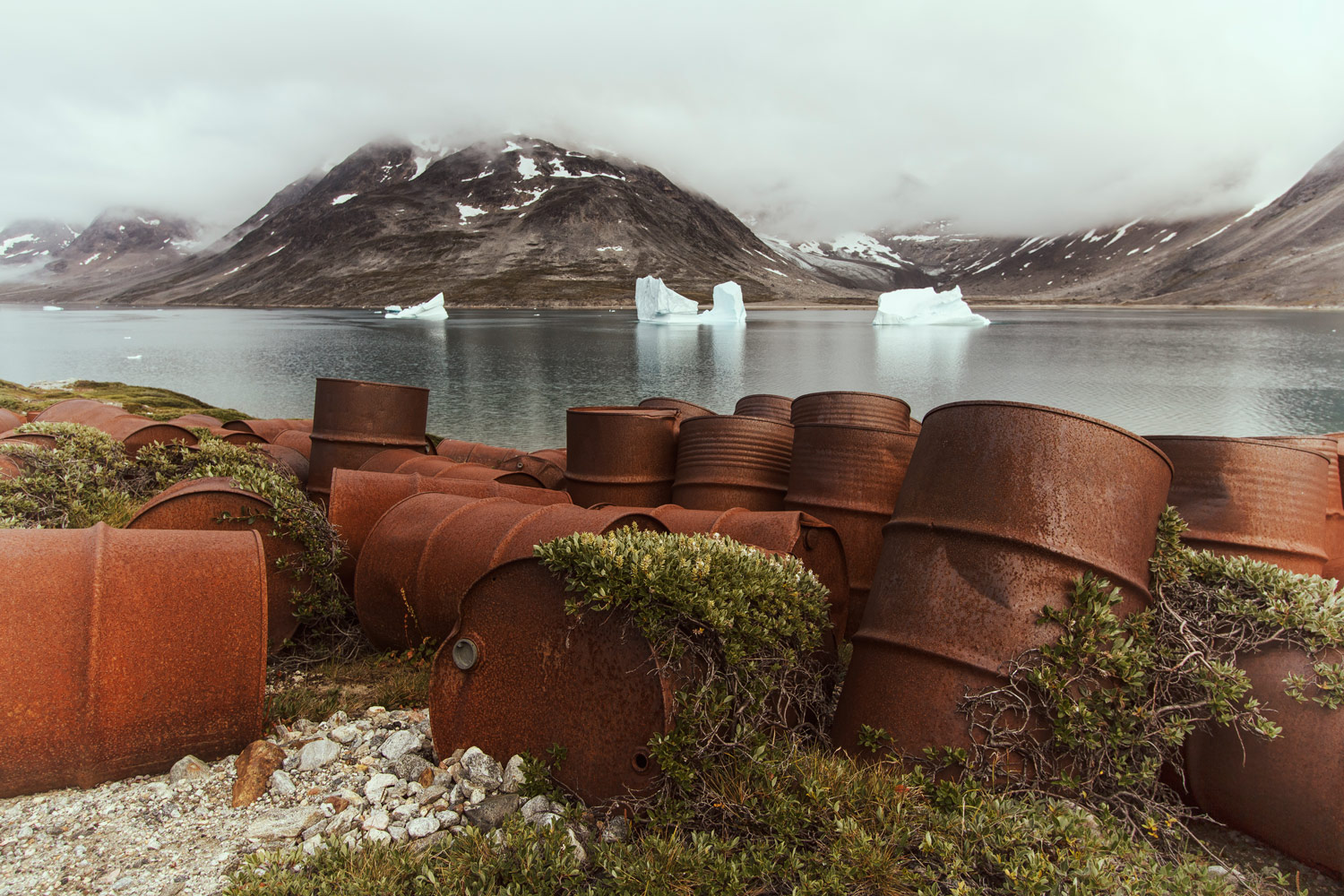
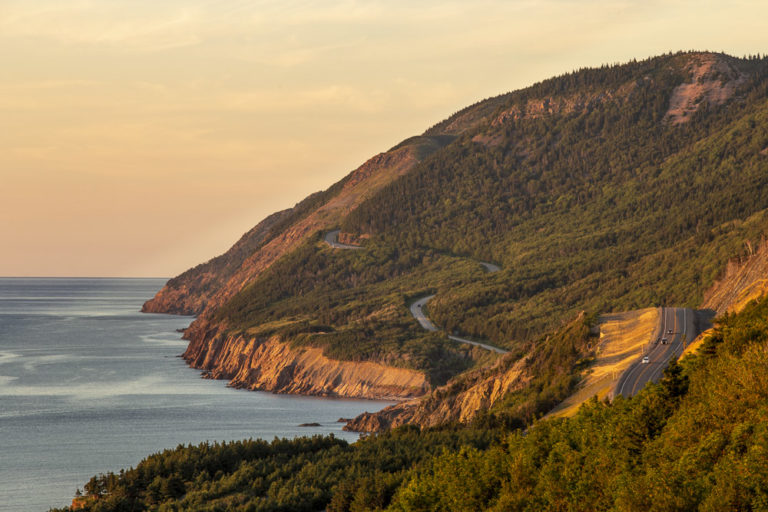
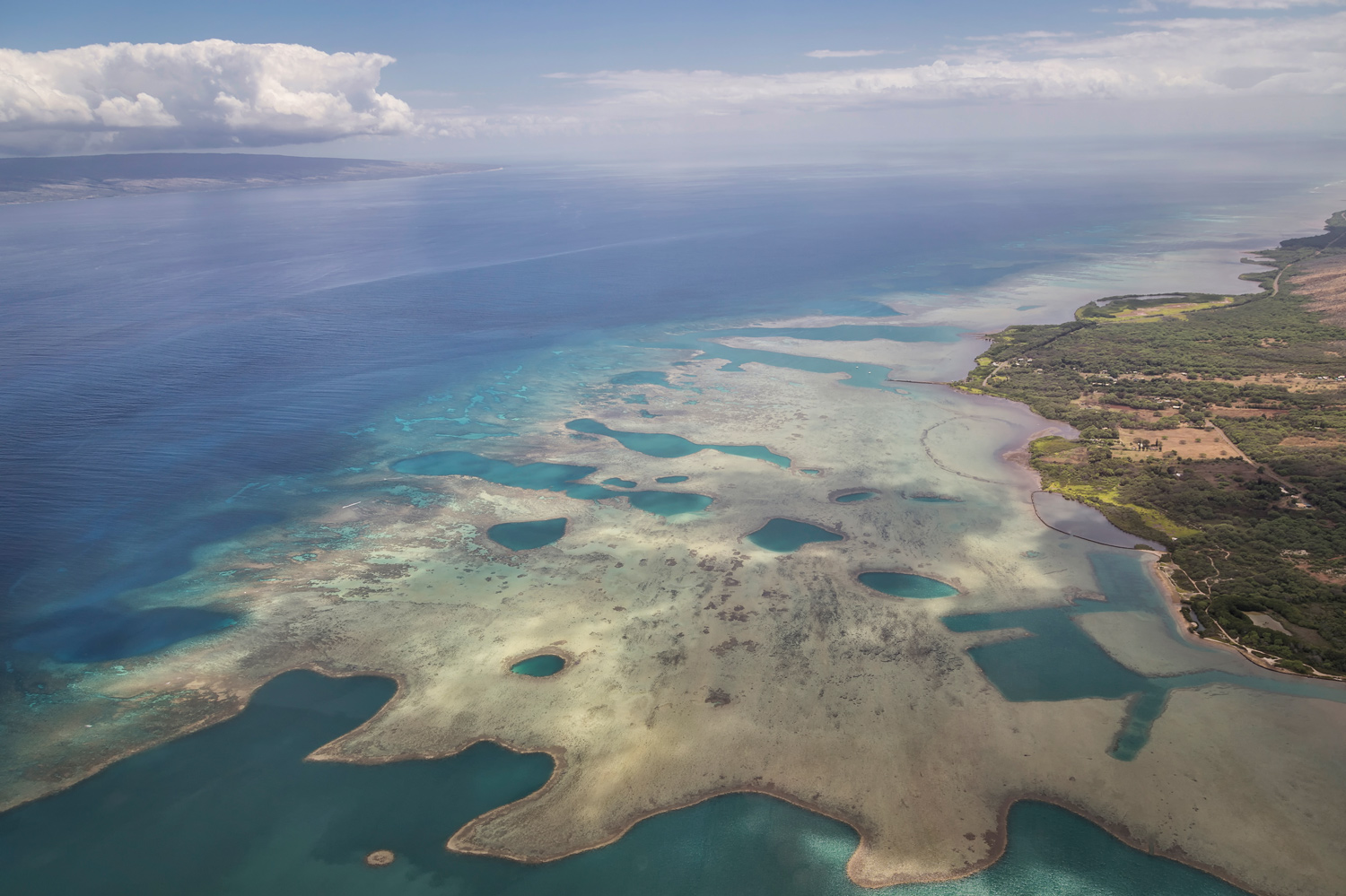
Fantastic photos guys! It looks haunted
I wish I could say “how dare they,” but I kind of figured that once you said U.S., that stuff is there to stay. =/
What a shame to just leave such a mess.
Shame on MAN !!!!
Ugh, what a shame. These photos are so eerie but I can’t look away.
I know, right? That’s how we felt when we are there. It’s eerily beautiful, actually, although I hate to use that word.
Absolutely fascinating!
Haunting…my boyfriend once flew into a base nearby but had never heard of this one. Must not be important to NATO, either.
Or, anybody. Such a sad mess.
These photos are really spectacular! I have discovered in my own travels that I’m a big fan of “urban decay” photography, and this seems like Greenland’s equivalent. It’s so eerie and atmospheric!
I can’t believe how arrogant the US is with the “shared burden” and the “setting a precedent” excuse. Stunning photos, but they would look much nicer without all that junk.
We are speechless and angry at the same time.
Sometimes it seems that arrogance and stupidity of
human beings has no limits.
Thank you for bringing this mess to the light.
We think all of us travel-bloggers should write more about such things.
If we will not have our beautiful planet, where will we travel then.
100% agree.
Environmentally, what a disaster and what a shame. But photographically… wow. I can’t help but think it looks amazing (even if I know it’s wrong!)
Our thoughts exactly! Such a horrid mess, but at the same time, kind of a photographer’s dream.
They have an abandoned base in Iceland as well. *sigh*
The photos are striking, but the reality of it is indeed worrisome and sad. That attitude – the “we don’t want to have to set a precedent and actually clean up after ourselves” – is pretty appalling. Makes me a little ashamed of my country, actually.
I can understand the concept of a “shared responsibility”…to a point. It essentially gives them a license to do anything if that is the case. Dreadful.
Wow! It may be litter, but it makes for some really interesting photos. It reminds me a little of the train graveyard just outside Uyuni in Bolivia.
Oh yeah, it does! We’ve been there too but never made that connection.
Such a shame of such a gorgeous environment. You did capture that mess beautifully though… Great shots…
Beautiful photos of something disgusting! You’re very talented photographers. I bet there’s loads of places like this all around the world that people just don’t know about, that’s the sad thing.
That is the sad thing, and I am sure you are right.
What a horror. This is the last thing I would imagine to see in this amazing land.
OUr sad reality is never hidden.
It was totally unexpected for us as well.
Ugh. Leave it to us to leave our mess behind destroying the ecosystems of other nations. (But, for a photographer that loves urban decay style photography, the photos are gorgeous!)
I’d never heard of places like this! The impact on the local environment is troubling, but I love the way you can see nature reclaiming bits and pieces as everything rusts.
I am torn between being horrified by this site and the others that you mentioned and their potentially enormous environmental impact – and awe at how beautifully you have documented this site. The images are as gorgeous as the article is illuminating.
Thanks Mary. Agree with your sentiment entirely. A horrible juxtaposition, really.
It’s so sad to see things like this happen. However, your photos are stunning! What a glorious landscape .
Great photos. Sigh…what a disgrace from the United States.
Wowzers! So dramatic!
Wow.. I’m amazed there are still air in the truck tires. I’m shocked but not surprised at this mess. The US foreign policy is somewhat bullish and their hypocrisy for environmental policy knows no bounds.
I’m so embarrassed by my country sometimes. I don’t understand why the government feels like it’s ok to leave messes and destruction all over the world. So sad.
Like many of the other commentators, I’m vacillating between the shamefulness of the environmental damage and the stark beauty of the photographs!
On the bright side, it makes for some interesting photography.
So, what is YOUR solution for cleaning it up.?
Major problem,,,,,
The people who made the mess should clean it up! I think it is that simple.
Incredible how you guys manage to capture something so horrible so beautiful. Great pictures, sad story!